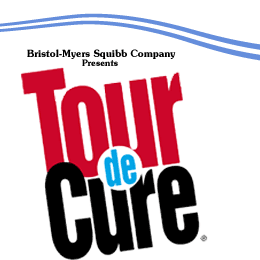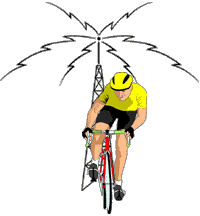 |
Communications Support for the American Diabetes Assn. Tour de Cure Raleigh to Outer Banks May 5/6, 2001 |
 |
 |
Communications Support for the American Diabetes Assn. Tour de Cure Raleigh to Outer Banks May 5/6, 2001 |
 |
|
The event was a great success, and raised more money for the ADA than they had expected. Thanks to the many hams and clubs who participated. There are several pages of pictures in the RARS gallery to show you what the event looked like, at least from the ham's view. Check out: pictures from the 2001 tour For now, the rest of this web site is "leftover" from the 2000 Tour. We'll spruce it up for 2001 a few months before that event begins. Thanks again, everyone! 73,
|
These pages provide information for the Amateur Radio volunteers for the American Diabetes Association Tour de Cure, from Raleigh to the Outer Banks in North Carolina. The Tour de Cure is a fundraising bike tour. There are Tour de Cure rides all across the country every year, and Amateur Radio provides logistics and safety communications for many of them. For general information on the Tour de Cure, call the ADA : 1 (888) Diabetes (342-2383), or stop by their web page at http://www.diabetes.org/adanc/. |
We need about 45 hams to provide communications for the Tour de Cure.
I'm hoping that hams from the many clubs along the route will volunteer
in the name of their club, "adopting" a rest stop, start/finish line, or
SAG wagon. To volunteer, e-mail or call:
and what you'll need to do it This Tour de Cure is a two-day, 175 mile bike tour. 2001 is the first year for this Tour, so it's hard to predict how many cyclists will participate. Similar tours in the area draw between 300 and 500. The Amateur Radio coordinators have years of experience on similar tours for other organizations, but this is a new route, with new repeaters and hopefully many new volunteers. We provide communications between the event organizers, the rest stops, the SAG wagons, medical personnel, start and finish lines, and supply truck. We handle messages ranging from the routine, like a request for more cups and water at a rest stop, to emergency calls for police and an ambulance if there's been an accident. We use VHF-FM and repeaters for our communication links. And if we get the hams to set it up, we would like to use APRS packet for some position reporting. Here are the details of what we do, and what you'll need to do it:
To do this, the ham needs flexible equipment - a handheld radio and crossband repeat mobile are ideal. All of the route is within mobile range of the repeater, but much of the route is in fringe territory, and a handheld won't make it. But you're not going to tie these people to a car, and you're not going to be running back and forth from the ADA person to your car to relay messages. Once you've left them, you'll never find them again! A crossband mobile repeater and HT give you the flexibility you need, and you need to know how to use it. For example, do you know how to set up one-way crossband repeat? You may be in your own vehicle, or you may need to set up in the ADA
official's vehicle, so be prepared with a magnet mount antenna and cigarette
lighter plug. And, since they often want to use that power plug for
their cell phone, you might pick up a cigarette lighter power splitter.
Some of the rest stops are in fringe terrritory for the repeaters. All operators can expect to need a full-power mobile radio. Rest Stop operators will use their own vehicle. We also cover the Start and Finish areas (Zebulon, Williamston, Manteo).
Stations assigned to Zebulon and Manteo will need a full-power mobile radios,
preferably equipped with crossband repeat capability.
The hams in each SAG Wagon are dispatched to riders needing assistance, and report trouble or accidents. Radio communication can also help keep the SAGs from getting bunched up on one part of the route (usually the lunch stop) while leaving other parts uncovered. SAG wagons keep track of where the first and last riders are, and keep count so rest stops know how many more cyclists are yet to arrive. Dick Orander KD4ISC is the SAG coordinator. During similar events last year, there were more than 10 SAG (Support And Gear) Wagons on the course. These are anything from large vans to pick-up trucks to cars with bike racks. They roam the route, looking for emergencies, break-downs, and worn-out riders who need a ride at least to the next rest stop. They are not required to be equipped for bike repair, so bikes with mechanical trouble are sagged to the next rest stop. If you have a vehicle capable of carrying two or more bikes and riders
safely, then volunteer as a SAG. (Mileage for anyone driving their
own vehicle is tax deductible).
The supply truck operator should plan on using a full-power mobile with
a magnet mount antenna, but you must be flexible. Sometimes there's
no cigarette lighter in the truck, and sometimes a plastic truck body makes
magnet mount antennas a problem. A rear-view mirror mount, and cables
to run to the battery may be required.
An attempt is always made to feed the volunteers at rest stops who may not make it to lunch... this has not always been successful, so you may want to pack a sandwich. If you want Coke or beverages other than water and "power drinks," bring them along, too. We hams usually head off to a local restrurant for a group dinner Saturday night, and on the way home Sunday afternoon. And although there are medical people on the route, a first-aid kit
can come in handy.
|